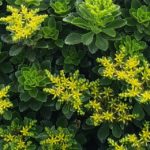Avoid fertilizing most trees and shrubs from August to November. Fertilize roses one last time to encourage new growth and late summer/early fall flowers.
August #11 (Outdoor)
August #10 (Outdoor)
To encourage another flush of flowers on your chaste tree (Vitex) cut the seed pods off as the flowers fade
August #9 (Outdoor)
Avoid pruning trees and shrubs starting in late August, particularly hedging plants such as boxwood, hemlock, and hollies, as doing so this late in the season can stimulate new growth…
August #8 (Outdoor)
Order spring-flowering bulbs in August and September to be planted in October and November.
August #7 (Outdoor)
Autumn crocus (Colchicum sp.) bulbs should be ordered now and planted soon after they arrive for a beautiful fall display. They are sometimes available at garden centers, but more often…
August #6 (Outdoor)
August is also a good time to dig and divide daylilies, using a sharp shovel to split the clumps into desirable sizes. Cut back foliage to 5 inches and replant…
August #5 (Outdoor)
Divide and transplant bearded iris during the month of August. Cut back the foliage by two-thirds, dig and divide rhizomes, and remove any dead portions. Check for iris borers and…
August #4 (Outdoor)
Stop watering amaryllis bulbs late this month and place in a dry location After the leaves turn yellow, remove the foliage and store bulbs in a cool, dry, dark place…
Bold Isn’t Always Big
August #3 (Outdoor)
For late crops of beets, carrots, callards, kale, lettuce, spinach, turnips, mustards, and radish, sow seeds before the middle of the month. Transplants of broccoli, cabbage, cauliflower, and onions can…
